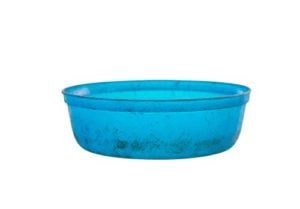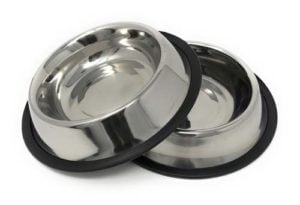New data shows that your dog's water bowl might be filled with germs that may negatively impact your pup's health.
The first thing we purchase for our pets is a food and water bowl.
But how much thought do you put into choosing a safe option?
Do you know if your pet's water bowl is really clean and safe to drink water from?
You might not realize it, but the type of bowl your dog uses and how often you clean this bowl has a big impact on the dog's health.
Do you know that you need to wash the water bowl with soap and water every day?
According to the report from the National Sanitation Foundation (NSF), the pet bowl ranks as the fourth kitchen item that's a hot spot for germs.
In some cases, salmonella and E. coli might still be present even after you clean the bowls in the dishwasher, says a 2006 study.
These germs lead to illnesses that can affect not just your dogs but also the humans living in the same household.
The babies and the elderly, whose immune systems are either developing or deteriorating, are most at risk for the bacteria in dogs' water bowls.
RELATED: Top 10 Best Dog Water Fountains (Tested and Reviewed)
Cleaning the Water Bowl
It will help to wash the bowl in warm water to kill the bacteria.
However, NSF said that soaking the bowl in some active cleaning ingredients for at least 10 minutes once a week might fully disinfect it from germs.
Use half a cup of bleach with a gallon of water, then let the bowls air dry.
Some people might not like to use bleach, but NSF said using this cleaning agent minimally and as directed is still effective and safe.
Check out their guide on how to keep your house clean when living with pets.
Do not simply add water to the bowl to refill your dog’s supply.
Dust, bits of hair, and other environmental elements may collect in your dog’s water.
So you have to clean it well and then replace the water completely at least once a day.
Choosing the Right Dog Water Bowl

It's not only how often you wash your dog's food and water bowl that should concern you. It's also important to buy the right type of dog bowl because its material composition may make your dog sick as well.
Stay away from pet bowls made of plastic material as much as possible.
These contain chemicals like phthalates or Bisphenol A (BPA) that have been linked to health problems like cancer, diabetes, obesity, and brain impairment, as per the Environmental Working Group (EWG).
On the other hand, some ceramic bowls might have been glazed with chemicals that may contain lead.
If you’re considering this type of water bowl, choose the quality carefully.
Ceramic bowls might also easily crack or chip, and that can be bad because bacteria can thrive in these spaces.
Similarly, some stoneware dog bowls might have high levels of lead content, thus raising the risk of lead poisoning.
In humans, lead poisoning might cause kidney and cardiovascular problems, joint and muscle disorders, and infertility, but its ill effects may also be the same in dogs.

One of the newest alternatives, the silicone dog water bowl, is non-toxic, chemically inert, and won't stain or leave an odor, so it might look like an ideal choice.
However, silicone can be less rigid and may wear out in due time, so you might have to replace it more often than other types of bowl.
Stainless steel is the classic go-to choice for cooking food for humans because it is non-porous. Hence, bacteria can’t easily form.
It's also less chemically exposed in the manufacturing process.
Generally, stainless steel dog bowls are the safest option for pet owners and their dogs.
However, stainless steel pet bowls cost more than other types, so it might not be an ideal option for some families on a budget.
Regardless of your preference, the very things to consider in choosing a pet water bowl are that it should be easy to clean and it’s scratch resistant.
Buy a new dog water bowl if the one your pup uses looks old and worn out.













